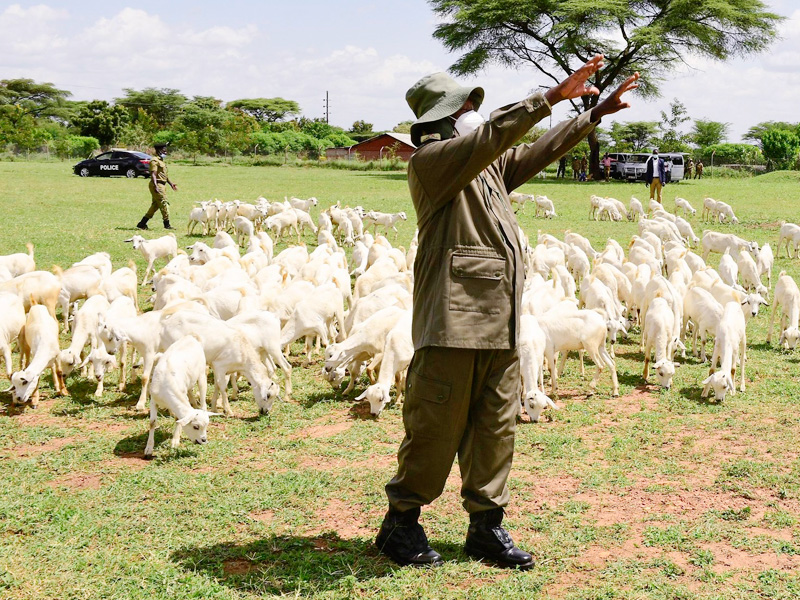At the edge of northeastern Uganda, in Karamoja, famine and unrest have forced thousands of people to escape.
Karamoja continues to suffer from the paradox of plenty despite the richness of minerals in its deepest parts of the ground. Currently, the area is rife with illness, sickness, and death.
The ground splits during the dry season as rivers and streams that were once a trickle dry up. As the scorching heat spreads across the wind-tossed areas of Karamoja, leaves and plants begin to wither. Locals who are starving eat seeds and leaves to stay full.
Thousands of people have been uprooted by clan cattle raids. While the army works to combat cattle banditry, which is being encouraged by the proliferation of light weapons across permeable border points, relative peace is beginning to return.
In 2021, Parliament approved a supplementary vote for Sh39 billion to be used to buy relief supplies for the Karamoja Sub-region in order to assist the most vulnerable members of the community, including as widows, the elderly, and young people who are abdicating their responsibilities.
GOAT SCANADAL AT OFFICE OF PRIME MINISTER
These groups were chosen by the parish leaders, and each potential beneficiary was to get 16 goats.
The mother, brother, and nephew of Karamoja Affairs Minister Goretti Kitutu, however, were allegedly discovered selling OPM-branded iron sheets to inhabitants of Namisindwa District during a recent sting operation by State House Anti-Corruption Unit investigators.
The MPs further accuse the minister of stealing 500 bags of maize seeds from Namalu Prison Stores under the Feed Karamoja Programme, out of 200 bags that were purportedly discovered in her home, and wasting Sh25b intended for the purchase of goats to be dispersed throughout the region.
This website learned during a visit to Kotido District in the Karamoja Sub-region that 13,000 goats have already been delivered and another 5,000 will soon be purchased and released to beneficiaries.
Relatives of influential people and politicians at OPM were identified as the source of the goats, whose quantity and health have been disputed.
Speaking to Daily Monitor Uganda , Mr David Amoding, a community development officer in Kotido, said: “Some goats died of Peste des petits ruminants (PPR), some sold the goats because of hunger and some goats were stolen by cattle thieves, but the main challenge that we saw, most of the goats from Teso had PPR. Most of [the beneficiaries] lost those goats that came from Teso, there is a farmer here in my community, out of 11 goats, he lost 10 goats and remains with only one goat, which is a Galla [breed].”
The Boer goats, a meat-focused South African breed with muscle, were among the additional animals provided. Yet the topography in Karamoja prevented the majority of the Boer goats from fleeing.
“Most of those that died were Boer goats. Most of the sub-counties received the goats. Other goats died at the quarantine where veterinary doctors treated them, goats died in hands of farmers and veterinary officers giving the impression that these goats were already infected with PPR, most of the goats died within two weeks. Farmers quickly sold the remaining goats when they realised they were dying,” Mr Amoding said.
